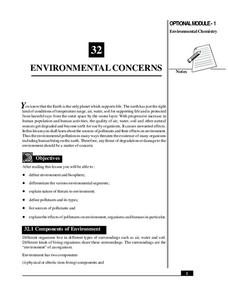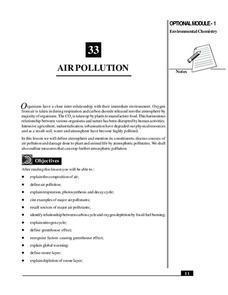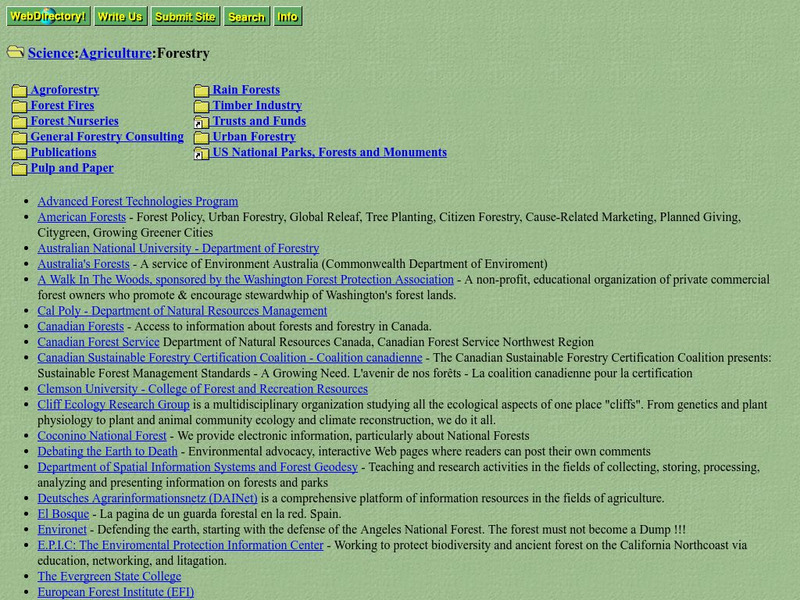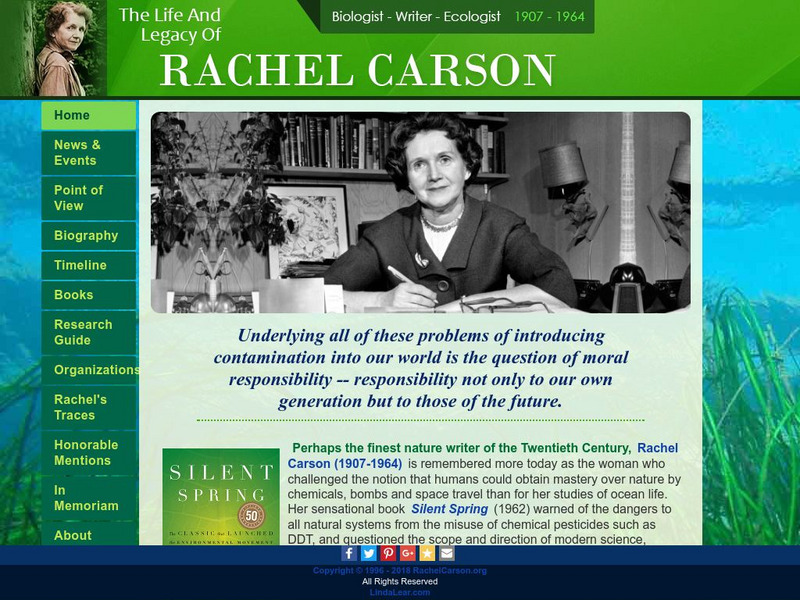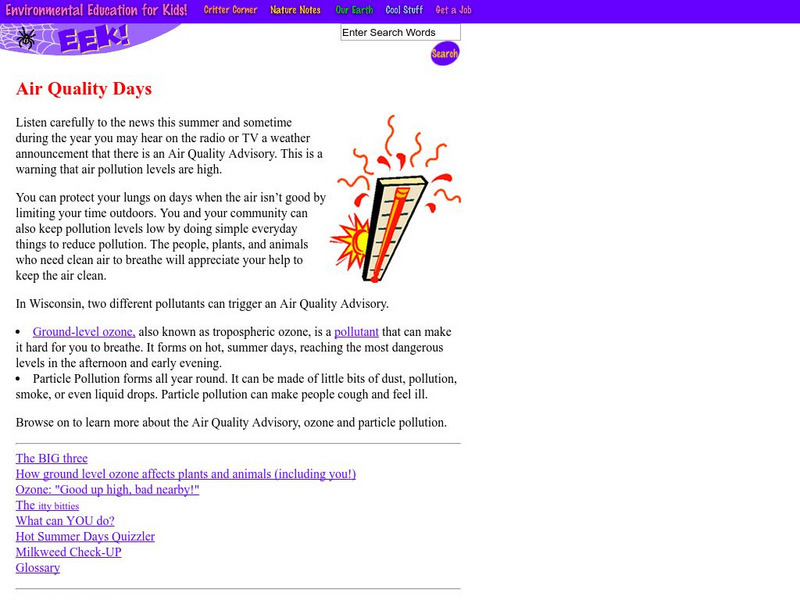National Institute of Open Schooling
Environmental Concerns
Every year, more than 14 billion pounds of garbage is dumped into the oceans of the world, most of which is plastic and toxic to ocean life. Lesson 32 in the series of 36 focuses on environmental concerns, specifically pollution. Under...
New York State Department of Environmental Conservation
Adaptations – Designs for Survival
What's the difference between behavioral adaptations and physical adaptations? Learn about the various ways that organisms adapt to their environment with a worksheet about the creatures of the Hudson River.
San José State University
Organizational Patterns for the Comparison/Contrast Essay
Organization is key in essay writing. The two organizational charts included in this resource model the block approach and the point-by-point approach to organizing a compare and contrast style essay. After examining the...
National Institute of Open Schooling
Heavy Metal Contamination
An informative lesson focuses on heavy metal contamination of environments. Classes read about, discuss, and answer questions pertaining to sources of heavy metals in the environment. To finish the 35th installment of 36, individuals...
Wilderness Classroom
Pollution
Educate scholars on pollution—air, water, and land—with a series of lessons that begin with a thorough explanation of each type. Learners then take part in three activities to reinforce the importance of reducing pollution. They...
National Institute of Open Schooling
Air Pollution
Seventy percent of the air pollution in China is due to car exhaust. Under the umbrella of environmental chemistry, learners extensively explore air pollution. From the makeup of our atmosphere to sources of major air pollutants, classes...
Teach Engineering
Where Are the Plastics Near Me? (Mapping the Data)
The last activity in a nine-part series has teams create a Google Earth map using the data they collected during a field trip. Using the map, groups analyze the results and make adjustments to the map to reflect their analysis. A short...
Beyond Benign
Daphnia Bioassay LD50
De-icing materials may have a harmful effect on our environment; have your class perform an experiment to test the nature of these effects. Scholars monitor the survival rate of a sample of daphnia as the concentration of a de-icing...
Other
Radford University: Environmental History Timeline: Sixties 1960 69
Features an environmental history timeline for the 1960s highlighting legislation and key events. Created by Professor William (Bill) Kovarik, Ph.D. from Radford University.
Career Cornerstone Center
Sloan Career Cornerstone Center: Environmental Engineering
A career in Environmental Engineering is profiled. Included: Environmental Engineering overview, Preparation, Day In The Life, Earnings, Employment, Career Path Forecast, Professional Organizations.
Other
Idaho Department of Environmental Quality: Common Water Quality Measures
An organized resource highlighting properties of freshwater and water quality concerns.
Other
Environmental Organization Web Directory: Forestry
This site has links and web resources, including teacher lesson plans, about forestry.
Microscopy UK
Microscopy Uk: Micscape Article Paramecium
Excellent article on a unicellular organism, the paramecium. Includes details on its environment, paramecium types, and environmental importance.
Other
Evergreen
A national charity created to turn schools into green space that celebrate the environment, as well as preserve natural outdoor spaces within Canadian cities, Evergreen has core programs: Learning Grounds - transforming school grounds,...
Other
Rachel Carson: The Life and Legacy of Rachel Carson
The home page for the Rachel Carson organization provides information on her life, work, and legacy.
Encyclopedia of Earth
Encyclopedia of Earth: Physics & Chemistry: Halocarbon
Article explaining what halocarbons are, where they occur in nature as well as man-made sources, how they are used, and their negative environmental impact. (Published: October 28, 2011)
The Association of the British Pharmaceutical Industry
Abpi: Population Growth
Students control the environments in four different scenarios to discover how any changes might affect populations. The different simulations include microorganisms, rabbits, foxes, and other organisms.
Other
Highlights of the Sierra Club's History
This informative timeline includes many details about the Sierra Club during the 1960s and 1970s.
Other
Paul's Garden World: The Science of Composting
Very thorough description of different organisms involved in decomposing organic material through composting. Includes actinomycetes, bacteria, fungi, and a variety of macro-organisms which also function as decomposers. Also discusses...
Environmental Education for Kids
Eek!: Hot Summer Days Ozone Action
Easy to read and understand site from Environmental Education for Kids. Good and bad ozone explained and illustrated. Complete with glossary and Quizzler at the end.
Other
Ratifying Kyoto Will Benefit Canada's Competitiveness
A sophisticated and in-depth research document suitable for senior students needing a primary study in the benefits of the Kyoto Protocol to Canada's economic competitiveness. A large Adobe PDF document is clickable and downloadable. The...
Other
Composting Practices (Pdf) [Pdf]
This publication explains the agricultural and environmental benefits of composting household waste. It explains the difference between hot and cool composting systems. It also documents research indicating turfgrass benefits from humus...
Chem4kids
Chem4 Kids: Chemistry in the Environment
This brief overview of the chemistry of the Earth gives students an idea of what environmental chemists might study.
Other
American Academy of Allergy, Asthma and Immunology
This resource describes an organization that is involved in studies and treatments of allergies. Research and education are also important parts of this organization.
